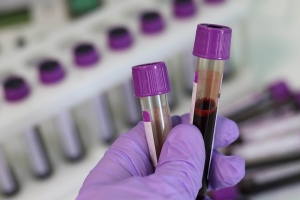cisa
Is it possible to treat a hangover?
July 23, 2024Is it possible to treat a hangover?
Scientists develop gel that can intercept alcohol and prevent hangovers.
A hangover is a combination of mental and physical symptoms that can be experienced after an episode of alcohol consumption, beginning when the blood alcohol concentration (BAC) approaches zero. The cause of these symptoms is primarily attributed to acetaldehyde, the main product of alcohol metabolism (1).
Existing therapies, mainly based on endogenous enzymes, offer only temporary relief from hangover symptoms such as nausea and headaches, but fail to address other issues like drowsiness and exhaustion (2). Nanocomplexes with various liver enzymes have emerged as an effective approach to accelerate alcohol metabolism in the human body (3). However, a major challenge is that commercially available enzymes are not sufficiently active, leading to the accumulation of a more dangerous byproduct, acetaldehyde, which can cause organ damage. Moreover, natural enzymes have significant drawbacks such as high cost, low physicochemical stability, and storage difficulties, which have so far hindered the practical use of these complexes for alcohol detoxification (4).
A recent study evaluated a biomimetic nanoenzyme substance designed to alleviate the harmful effects of alcohol when administered orally. This nanoenzyme demonstrates an ability to catalyze the oxidation of alcohol into acetic acid, rather than the more toxic acetaldehyde. When administered to alcohol-intoxicated mice, the gelatinous nanoenzyme significantly reduced blood alcohol levels without causing additional acetaldehyde accumulation. The hydrogel also showed a protective effect on the liver and reduced intestinal damage and dysbiosis (imbalance in the composition of intestinal microbiota) associated with chronic alcohol consumption.
This study offers promising opportunities for the development of effective, targeted antidotes for alcohol, with potential benefits for liver protection and gastrointestinal health, which could be favorable for hangover prevention. However, further research is needed to confirm these findings in humans and to develop new therapies that can be used practically and affordably. Continued investigations in this area are crucial to advance understanding and treatment of the adverse effects of alcohol consumption, providing better solutions for public health.
References:
- Verster JC, van Rossum CJI, Scholey A. Unknown safety and efficacy of alcohol hangover treatments puts consumers at risk. Addict Behav. 2021 Nov;122:107029. doi: 10.1016/j.addbeh.2021.107029. Epub 2021 Jun 27. PMID: 34225031.
- Xie, L. et al. The protective effects and mechanisms of modified Lvdou Gancao decoction on acute alcohol intoxication in mice. J. Ethnopharmacol. 282, 114593 (2022).
- Liu, Y. et al. Biomimetic enzyme nanocomplexes and their use as antidotes and preventive measures for alcohol intoxication. Nat. Nanotechnol. 8, 187–192 (2013).
Can alcohol cause premature aging?
July 23, 2024Can alcohol cause premature aging?
A study conducted by the University of Nagoya in Japan shows an association between the harmful effects of aldehydes on DNA, which may be related to premature aging.
It is known that aging is a normal developmental process involving physiological changes (1). Additionally, the body is influenced by environmental and sociocultural factors such as quality of life, lifestyle, diet, sedentarism, and physical exercise, which are directly related to healthy or pathological aging (1).
In light of this, alcohol consumption has been cited as a factor that may be involved in the process of premature aging. A British study (2) aimed at investigating the effects of alcohol on aging showed that excessive alcohol consumption can damage DNA, specifically in telomeres – repetitive structures of proteins and DNA that form the ends of chromosomes and act to prevent genetic material wear and tear. According to the study, increased oxidative stress caused by excessive alcohol may directly contribute to the shortening of these DNA structures.
Similarly, a recent Japanese study published in the journal Nature Cell Biology (3) demonstrated how the harmful effects of aldehydes on DNA may also be associated with premature aging. But where does alcohol fit into this scenario?
After alcohol ingestion, ethanol is rapidly absorbed by our body. Alcohol metabolism begins with the action of the enzyme alcohol dehydrogenase (ADH), which converts alcohol into acetaldehyde, a substance that is toxic to the body even in small concentrations. Then, the enzyme aldehyde dehydrogenase (ALDH) converts acetaldehyde into acetate.
The study points out that aldehydes are genotoxic agents* because they interfere with DNA-protein replication and transcription, and such types of damage are particularly harmful since they can lead to cell death if not repaired. As a result, researchers suggest that aldehydes as metabolic by-products are associated with premature aging.
The research first identified a previously uncharacterized DNA repair pathway: transcription-coupled DNA-protein crosslink repair. As a result, the study showed that transcription-coupled DNA-protein repair, as well as aldehyde clearance, were crucial for protection against metabolic genotoxins. This could explain the molecular pathogenesis of AMeDS (aldehyde metabolic deficiency syndrome, characterized by bone marrow deficiency, intellectual deficiency and dwarfism) and other disorders associated with defects in transcription-coupled repair, such as Cockayne syndrome (rare, autosomal recessive disorder, with unknown pathogenesis and with impairment in growth and progressive neurological dysfunction).
According to researchers (4), this study has implications beyond genetic diseases, as its findings suggest that aldehyde-induced DNA damage may also play a role in the aging process in healthy individuals. They also mention the importance of strategies to combat aging in healthy individuals, such as controlling exposure to substances that induce aldehyde production, such as alcohol intake and exposure to pollution and smoke.
*Genotoxic agents are those that interact with DNA producing changes in its structure or function.
References:
- Santos FH dos, Andrade VM, Bueno OFA. Envelhecimento: um processo multifatorial. Psicologia em Estudo [Internet]. 2009 Mar 1;14:3–10. Available from: https://www.scielo.br/j/pe/a/FmvzytBwzYqPBv6x6sMzXFq/
- Topiwala A, Taschler B, Ebmeier KP, Smith S, Zhou H, Levey DF, et al. Alcohol consumption and telomere length: Mendelian randomization clarifies alcohol’s effects. Molecular Psychiatry [Internet]. 2022 Jul 26;1–8. Available from: https://www.nature.com/articles/s41380-022-01690-9#Sec10
3. Oka Y, Nakazawa Y, Shimada M, Ogi T. Endogenous aldehyde-induced DNA–protein crosslinks are resolved by transcription-coupled repair. Nature Cell Biology [Internet]. 2024 Apr 10;1–13. Available from: https://www.nature.com/articles/s41556-024-01401-2
- Impact of aldehydes on DNA damage and aging [Internet]. NU Research Information. [cited 2024 Jul 1]. Available from: https://www.nagoya-u.ac.jp/researchinfo/result-en/2024/04/20240411-01.html
Alcohol and Hepatic System
July 23, 2024Alcohol and Hepatic System
Excessive alcohol consumption damages nearly every organ in the body. However, the liver suffers the earliest and most severe degrees of tissue injury due to excessive alcohol consumption, as it is the organ responsible for almost all ethanol metabolism (1). In this text, we will explore how the liver is affected by harmful alcohol consumption.
The liver's function
Normal liver function is essential for life. The liver is the largest internal organ in the human body and, in some aspects, the most complex. One of its main functions is to break down toxic substances absorbed from the intestine or produced in other areas of the body, and then excrete them via bile or blood as harmless by-products.
Additionally, the liver secretes bile into the small intestine to aid in the digestion and absorption of fats, stores vitamins, synthesizes proteins and cholesterol, metabolizes and stores sugars. The liver controls blood viscosity and regulates clotting mechanisms (2).
Alcoholic liver disease
One study estimated that 23.6 million people worldwide have alcohol-associated cirrhosis, with approximately 10% of these cases being decompensated disease (3). However, the true burden of alcoholic liver disease is likely underestimated, as it is often undiagnosed.
There is a clear amount-dependent relationship between the amount of alcohol consumed and the risk of severe liver disease. A meta-analysis demonstrated that even very low levels of alcohol consumption increase the risk of cirrhosis-related mortality. This risk is heightened with increased consumption, with men and women who consume more than 60 grams of alcohol per day having a 14 and 22.7 times greater risk, respectively, of cirrhosis-related death compared to non-drinkers (4).
How alcohol affects liver metabolism (5)
When consumed in excess, alcohol interferes with an enzyme called AMPK, which normally helps regulate fat metabolism. AMPK activates another protein, PPARα, which is important for fatty acid burning. Alcohol inhibits AMPK, resulting in reduced fat burning by the liver. Additionally, alcohol damages mitochondria, the cell's "energy factories," which also reduces the liver's ability to burn fats.
Alcohol also increases fatty acid production in the liver. Furthermore, alcohol consumption reduces the production of adiponectin, a hormone that helps control fat levels, and increases the release of fatty acids from body fat deposits.
On the other hand, alcohol inhibits the secretion of fatty acids by the liver, further contributing to fat accumulation in the organ. It also affects various cellular signaling pathways, including those associated with inflammation and regulation of autophagy (cellular cleaning process). These changes contribute to the progression of alcoholic fatty liver disease, a condition characterized by excessive fat accumulation in the liver.
Additionally, alcohol can cause an imbalance in gut bacteria, worsening liver disease. This imbalance increases ethanol metabolism in the intestine and causes intestinal dysfunction. Bacteria and toxins can enter circulation and reach the liver, activating an inflammatory pathway called NFκB. The pro-inflammatory cytokines released in this process contribute to inflammation and fibrosis in the liver. Alcohol also favors necrosis (uncontrolled cell death) over apoptosis (programmed cell death), which can further aggravate the liver condition.
Types of alcohol-induced liver damage
In individuals who abuse alcohol, the most common liver diseases encountered are:
- Alcoholic steatosis (fatty liver): Fat deposition occurs in almost all individuals who abuse alcohol excessively and frequently. Steatosis corresponds to the first stage of alcoholic liver disease. Steatosis can also occur in diabetic individuals, obese individuals, those with severe protein malnutrition, and users of certain medications (1).
- Alcoholic hepatitis: This condition involves inflammation and/or destruction (e.g., necrosis) of liver tissue. Symptoms include loss of appetite, nausea, vomiting, abdominal pain, fever, and in some cases, confusion (2).
- Alcoholic cirrhosis: It is an advanced form of liver disease resulting from progressive damage to liver cells. A cirrhotic liver is characterized by extensive fibrosis that compromises liver function and can impair the functioning of other organs such as the brain and kidneys (2).
- Hepatocellular carcinoma (Liver cancer): Chronic and abusive alcohol consumption is also associated with an increased risk of developing hepatocellular carcinoma, a type of liver cancer. This cancer can arise in a liver already presenting cirrhosis or, in some cases, directly due to the carcinogenic effects of alcohol (6).
How alcohol damages the liver?
Alcohol damages the liver through various mechanisms, and not all alcoholics develop liver problems regardless of the amount consumed. Genetic factors may influence the predisposition to cirrhosis, with collagen synthesis in the liver being affected by the activation of specific genes (5). Genetic variations in enzymes that metabolize alcohol, such as the ALDH gene, can also increase susceptibility to liver damage. Alcohol metabolism generates free radicals and acetaldehyde, which cause cellular damage in the liver (7).
Women are more susceptible to cirrhosis with lower accumulated doses of alcohol due to lower gastric ADH activity and differences in fatty acid metabolism (1,5,8). Additionally, nutrition interacts with alcohol toxicity, exacerbating liver damage. Infection with hepatitis C virus also increases the risk and progression of liver injuries in alcoholics (3). In summary, intense and chronic alcohol consumption predisposes individuals to liver diseases, but only a portion of them develop hepatitis or cirrhosis due to the influence of factors such as heredity, gender, diet, and comorbidities. Most alcohol-induced liver injuries result from its metabolism and toxic by-products. Continuous research is essential to better understand these mechanisms and develop effective treatments to improve prevention and management of alcoholic liver diseases.
References:
- Lieber CS. Alcohol and the liver: metabolism of alcohol and its role in hepatic and extrahepatic diseases. Mt Sinai J Med. 2000 Jan;67(1):84-94. PMID: 10677787.
- Yamada, T., Alpers, D. H., Kalloo, A. N., Kaplowitz, N., Owyang, C., & Powell, D. W. (2009). Textbook of Gastroenterology, Fifth Edition. Blackwell Publishing Ltd. https://doi.org/10.1002/9781444303254
- Asrani SK, Mellinger J, Arab JP, Shah VH. Reducing the global burden of alcohol-associated liver disease: a blueprint for action. Hepatology. 2021;73(5):2039–50.
- Rehm J, Taylor B, Mohapatra S, Irving H, Baliunas D, Patra J, et al. Alcohol as a risk factor for liver cirrhosis: a systematic review and meta-analysis. Drug Alcohol Rev. 2010;29(4):437–45.
- Seitz, H. K., & Stickel, F. (2007). Molecular mechanisms of alcohol-mediated carcinogenesis. Nature Reviews Cancer, 7(8), 599-612.
- Huang DQ, Tan DJH, Ng CH, Amangurbanova M, Sutter N, Lin Tay PW, Lim WH, Yong JN, Tang A, Syn N, Muthiah MD, Tan EXX, Dave S, Tay B, Majzoub AM, Gerberi D, Kim BK, Loomba R. Hepatocellular Carcinoma Incidence in Alcohol-Associated Cirrhosis: Systematic Review and Meta-analysis. Clin Gastroenterol Hepatol. 2023 May;21(5):1169-1177. doi: 10.1016/j.cgh.2022.06.032. Epub 2022 Aug 5. PMID: 35940513; PMCID: PMC10792532.
- Edenberg HJ. The genetics of alcohol metabolism: role of alcohol dehydrogenase and aldehyde dehydrogenase variants. Alcohol Res Health. 2007;30(1):5-13. PMID: 17718394; PMCID: PMC3860432.
- Parlesak A, Billinger MH, Bode C, Bode JC. Gastric alcohol dehydrogenase activity in man: influence of gender, age, alcohol consumption and smoking in a caucasian population. Alcohol Alcohol. 2002 Jul-Aug;37(4):388-93. doi: 10.1093/alcalc/37.4.388. PMID: 12107043.
Do low or zero alcohol beers benefit wealthier people more?
While the increased availability of low or zero alcohol products may be a useful tool in reducing overall alcohol consumption among the more affluent sectors of society, it may be less beneficial for the rest of the population.
Alcohol consumption is among the leading factors contributing to health deterioration and premature death (1). In response to this, the World Health Organization (WHO) has set a target in the Global Action Plan on Alcohol 2022-2030 to achieve at least a 10% relative reduction in per capita alcohol consumption among those aged 15 and older by 2030 (2). Recently, this issue has gained increased attention from policymakers and global alcohol markets. However, there are doubts about its potential to reduce alcohol consumption across all sectors of society (3).
Evidence indicates that the choice of lower alcohol products is often driven by previous consumption of higher alcohol content products from the same brand (4). Other studies suggest that factors such as health and well-being, price differences, and reducing the social stigma associated with alcohol-free beverages also influence purchasing decisions and consumption of zero and low alcohol beers (5).
One study used data from British surveys conducted between 2015 and 2018, as well as household purchase data from 2015 to 2020 (6). The analysis used this data to understand consumption and purchasing patterns of low and zero alcohol beers. It included information on purchase frequency, demographic characteristics of buyers such as age, gender, social class, income, and geographical region. Additionally, household purchase data were analyzed to observe trends over time and examine variations in total ethanol consumption resulting from the introduction of these products into the market.
The study's results showed that the introduction of new low and zero alcohol beers was associated with a reduction in ethanol grams purchased, both among beer buyers and purchasers of all other beverages. Specifically, younger households and individuals from higher socioeconomic classes were more likely to purchase and consume these beers, given their higher price compared to products with higher ethanol content.
According to the study, although there is a growing trend in current purchases and consumption of low alcohol and/or alcohol-free beers, such products could only make a small contribution to efforts to reduce alcohol consumption, as they are still not very popular among the less advantaged sectors of society. Therefore, the study's authors emphasize the importance of implementing structural policies that improve the socioeconomic outlook for the entire population, alongside promoting low and zero alcohol products.
References:
- World Health Organization (WHO) Global Status Report on Alcohol and Health. WHO Press; Geneva, Switzerland: 2018.
- World Health Organization . Global Action Plan for the Prevention and Control of NCDs 2022–2030. World Health Organization; Geneva, Switzerland: 2022.
- Corfe S., Hyde R., Shepherd J. Alcohol-Free and Low-Strength Drinks Understanding Their Role in Reducing Alcohol-Related Harms. [(accessed on 30 August 2021)]. Available online: https://www.smf.co.uk/publications/no-low-alcohol-harms/
- Chrysochou P. Drink to get drunk or stay healthy? Exploring consumers’ perceptions, motives and preferences for light beer. Food Qual. Prefer. 2014;31:156–163. doi: 10.1016/j.foodqual.2013.08.006.
- Silva A.P., Jager G., van Bommel R., van Zyl H., Voss H.-P., Hogg T., Pintado M.M., de Graaf C. Functional or emotional? How Dutch and Portuguese conceptualise beer, wine and non-alcoholic beer consumption. Food Qual. Prefer. 2016;49:54–65. doi: 10.1016/j.foodqual.2015.11.007.
- Anderson, P., O'Donnell, A., Kokole, D., Jané Llopis, E., & Kaner, E. (2021). Is Buying and Drinking Zero and Low Alcohol Beer a Higher Socio-Economic Phenomenon? Analysis of British Survey Data, 2015-2018 and Household Purchase Data 2015-2020. International journal of environmental research and public health, 18(19), 10347. https://doi.org/10.3390/ijerph181910347
I want to drink less, but how?
June 27, 2024I want to drink less, but how?
Preventing excessive alcohol consumption is a strategy that significantly contributes to reducing the social impacts and damage to physical health that this pattern of consumption is responsible for.
The impact of harmful alcohol use is of great relevance in different areas: individual, family, social and economic. The World Health Organization (WHO) suggests some strategies to reduce the harmful use of alcohol globally, such as, for example, monitoring this use, greater control and supervision over sales to children and adolescents, increasing the ability of the healthcare system to identify drinkers with problematic use and care for dependents and family members.
In addition to broad global strategies, there are clinical strategies that we can implement in everyday life to prevent excessive alcohol consumption. The United States Center for Disease Control and Prevention suggests some actions that can contribute to this prevention, such as:
- Avoid drinking too much and encourage others to do the same;
- Monitor your alcohol consumption and find out more about the benefits of drinking less;
- If you choose to drink alcohol, limit yourself to 2 drinks per day if you are a man or 1 drink per day if you are a woman;
- Do not serve or provide alcohol to anyone who should not drink, including people under 18, pregnant women or those who have already had too much to drink;
- Talk to your doctor about your drinking behavior and ask for advice.
We can also point out strategies such as: setting goals, if you decide to consume alcohol, defining the day and the amount you want to drink; identify what triggers your desire to drink; know your limits and learn to say no; pay attention to the alcohol content of the drinks you drink, especially those containing mixes; and reflect on where and why you usually drink, making alcohol consumption more conscious. Practicing activities and going to places that do not combine alcohol, such as sports, parks or cinema, can help reduce the desire to drink.
If you realize that you are drinking excessively and want to reduce your alcohol consumption, whether for health or personal reasons, an important step has already been taken. The important thing now is to define the best strategy for your case. Talk to your doctor or a healthcare professional for help.
References:
Ryan, S. M., Jorm, A. F., Kelly, C. M., Hart, L. M., Morgan, A. J., & Lubman, D. I. (2011). Parenting strategies for reducing adolescent alcohol use: a Delphi consensus study. BMC public health, 11, 13. https://doi.org/10.1186/1471-2458-11-13
Guidelines for the safety of bartenders and other professionals who work with alcoholic beverages
June 27, 2024Guidelines for the safety of bartenders and other professionals who work with alcoholic beverages
Professions that involve frequent interaction with alcoholic beverages face unique challenges related to alcohol consumption. For these professionals, alcohol is constantly present in the work environment, which can increase the risk of harmful use.
Daily familiarity with alcohol in the routine of some professions can lead to a distorted perception of what constitutes safe and moderate consumption, increasing the risk of developing harmful drinking habits. This may be the case for bartenders, waiters, sommeliers, and other professionals for whom alcohol is part of their work routine. This constant exposure can make it difficult for individuals to recognize and admit possible alcohol-related problems, given the normalization of its consumption in the context of their work.
A study published in 2022, analyzing more than 300 bartenders, revealed that 39% of participants exhibit harmful alcohol consumption and 43.6% report moderate to severe use, which may indicate alcohol dependence. The research shows that, in the case of these professionals, working more than 40 hours a week contributes significantly to the increase in alcohol consumption, with men and individuals between 26 and 40 years old showing greater problematic use when compared to other age groups.
There are no official safety guidelines for alcohol consumption among these professionals in Brazil. However, we can list some protection measures that can be effective for these professionals:
- Moderation: If you must consume alcohol, especially during work hours, do so in moderation. This means not exceeding one drink, in the case of women, and two, in the case of men. This helps maintain professionalism and ensures they can perform their duties properly.
- Hydration: Drinking plenty of water between alcoholic beverages can help prevent dehydration and mitigate the effects of alcohol consumption.
- Pause: It is important for bartenders and sommeliers to drink slowly and take breaks when tasting alcoholic beverages. This can help avoid excessive consumption and the associated risks.
- Avoid drinking on an empty stomach: Consuming alcohol on an empty stomach can lead to faster intoxication. Eating a balanced meal before or during alcohol consumption can help slow the absorption of alcohol into the bloodstream.
- Know your limits: Understanding your own alcohol tolerance is crucial. Bartenders and sommeliers must know when to stop drinking and avoid peer pressure to overconsume.
- Designated driver or alternative transportation: Planning ahead for safe
- transportation after work events where alcohol is consumed is important. Having a designated driver who will not consume alcohol or use alternative transportation options can prevent accidents and ensure everyone gets home safely.
- Training and education: Many establishments offer training and education on service and responsible alcohol consumption for their employees, including bartenders and sommeliers. This includes information about recognizing signs of intoxication in clients and themselves and taking steps to prevent and avoid them.
- Workplace policies: Some establishments have specific policies regarding employee alcohol consumption, both during and outside of work hours. It is important that bartenders and sommeliers are aware of and follow these policies.
It is also important that public policies and interventions in the workplace are adapted to meet the needs of these workers, offering clear guidelines for consumption and assistance programs for professionals in need. Awareness and prevention programs should focus on education about drinking limits and strategies for dealing with workplace pressure to consume alcohol.
References:
Bell, Deborah, and Florentia Hadjiefthyvoulou. “Alcohol and drug use among bartenders: An at risk population?.” Journal of substance abuse treatment vol. 139 (2022): 108762. doi:10.1016/j.jsat.2022.108762.
How demographic changes in Brazil impact health and excessive alcohol use
Population aging, an unprecedented global phenomenon, has become a major public health concern, significantly impacting disease epidemiology and placing a burden on healthcare systems. A recent study revealed that in 2017, 51% of the global burden of disease in adults was age-related, especially cardiovascular diseases and neoplasms [1]. Aging can lead to progressive loss of physical, mental and cognitive integrity, resulting in impaired functions and greater vulnerability to disease and death.
Using data from 2000 to 2020, the study "Demographic shifts and health dynamics: Exploring the impact of aging rates on health outcomes in Brazilian capitals" [2] investigated the relationship between demographic changes, particularly population aging, and health outcomes in Brazilian capitals. The study explores how population aging and other socioeconomic variables influence health indicators, such as mortality from chronic non-communicable diseases (NCDs) and hospitalizations for “primary care sensitive conditions” (PCSC), that is, health conditions that can be treated in basic health units and which, if they are not available, can lead to hospitalization; a common example of PCSC is hypertension.
The results showed that among men, population aging rates were associated with greater occurrences of excess weight and diabetes, while in women, several factors, including smoking, excessive alcohol consumption, hypertension, diabetes and obesity, were associated with higher rates of population aging.
The increase observed in population aging rates in all Brazilian regions, mainly in the South and Southeast, reflects an intense demographic transformation. Capitals with a greater aging population also have higher rates of mortality from NCDs and hospitalizations from PCSC. Health inequalities between Brazilian capitals are also increasing, with poorer cities experiencing worse health outcomes.
This trend reflects global patterns already highlighted by the United Nations, indicating potential strains on public health and healthcare systems as populations age. Implementing public health policies aimed at meeting the needs of the elderly population is a major challenge in this scenario. With the expansion of the elderly population, there will be an increase in demand for health services. Social security systems may also face pressure as the disparity between workers and retirees widens. Political preparation is essential to face these issues. Investments in preventive health care for seniors, along with workforce development initiatives, can help alleviate the impact of an aging population.
References:
Chang, A. Y., Skirbekk, V. F., Tyrovolas, S., Kassebaum, N. J., & Dieleman, J. L. (2019). Measuring population ageing: An analysis of the Global Burden of Disease Study 2017. The Lancet Public Health, 4(3), e159–e167. https://doi.org/10.1016/S2468-2667(19)30019-2
Are the brains of men and women differently affected by alcohol and stress?
A new study looks at how the brains of men and women diagnosed with alcohol use disorder respond to stressful stimuli and triggers for alcohol consumption. The differences found are surprising!
Stress is an aggravating factor for alcohol consumption and significantly affects mental health. In this sense, drinking to deal with negative emotions should be considered a warning sign, as it increases the chances of problems with alcohol. In cases where alcohol is already a problem, any stress or trigger, such as seeing images of people drinking, can increase the risk of binge drinking.
Seeking to understand how biological sex can affect these aspects, researchers at Yale University carried out a survey of 77 participants (46 men and 31 women) diagnosed with disorders associated with alcohol use. These participants were asked to view 3 types of images while “mapping” of the brain activity of these individuals was carried out (a technique called “functional magnetic resonance imaging”). After this mapping, patients were monitored for eight weeks regarding their daily alcohol consumption.
The main objective of the research was to evaluate how different “maps” of brain activity were associated with days of heavy drinking over the following eight weeks. And indeed, the researchers found some significant differences: for example, among women, a lower level of brain activation in a region called the anterior cingulate cortex was found to be correlated with more days of heavy drinking. This finding was not observed in males, who, in turn, had a higher level of activation in brain regions known as the hypothalamus and hippocampus.
All of these regions are important components of the brain reward system, and are linked to drug addiction. Such results lead researchers to point out the possibility that alcohol consumption among female and male people occurs due to the activation of different regions of the reward system, highlighting the need to search for different therapeutic strategies according to the sex of the patient. Although more studies are needed to reach a more solid conclusion on the subject, these results contribute to a general trend in the health sector to provide more individualized therapeutic care, taking into account not only disorders, but various characteristics of the individual, such as gender and age.
References:
Radoman, M., Fogelman, N., Lacadie, C., Seo, D., & Sinha, R. (2024). Neural correlates of stress and alcohol cue-induced alcohol craving and of future heavy drinking: evidence of sex differences. American journal of psychiatry, 181(5), 412-422.
Alcohol consumption and risk of dementia
June 10, 2024Alcohol consumption and risk of dementia
Study analyzes the impact of alcohol consumption on regions of the brain and the impact on the development of dementia.
Recently, several media outlets published a study showing the main risk factors for the development of dementia, with harmful alcohol consumption, air pollution and diabetes being the three main ones. The study, carried out by researchers at the University of Oxford, and published in the journal Nature Communications, presents a sophisticated methodology for analyzing a United Kingdom database, the UK Biobank, already used in other studies published by CISA.
The study, published in March 2024, analyzed the effect of risk factors on a set of brain regions with greater vulnerability to the aging process and dementia. In total, 15 risk factors for dementia were investigated, such as diabetes, blood pressure, cholesterol level, weight, smoking, air pollution, socialization and alcohol consumption. To carry out this investigation, an analysis of the genome of around 40 thousand people was carried out through the UK Biobank.
Seeking to identify the risk factors associated with the degeneration of a brain network known as LIFO, the authors first investigated the natural reduction of gray matter (a region containing neurons) presented by the 40,000 biobank data. This LIFO network is associated with important cognitive functions such as attention, working memory and other cognitive functions. After that, along with genetic analysis, the researchers compared the results of the LIFO network degeneration with data from participants about the modifiable risk factors mentioned above, important for the development of dementia.
The authors point out that this study reveals both genetic and modifiable risk factors associated with one of the most fragile regions of the brain for aging and the development of dementia. The authors conclude that the findings pave the way for new research on aging.
References:
Manuello, J., Min, J., McCarthy, P., Alfaro-Almagro, F., Lee, S., Smith, S., ... & Douaud, G. (2024). The effects of genetic and modifiable risk factors on brain regions vulnerable to ageing and disease. Nature Communications, 15(1), 2576.
Gout and alcohol consumption
June 10, 2024Gout and alcohol consumption
How can alcohol consumption affect Gout?
According to the Brazilian Society of Rheumatology (1), gout is an inflammatory disease that mainly affects the joints and occurs when the level of uric acid in the blood is above normal levels (hyperuricemia). As alcohol consumption is one of the risk factors for this disease, recent research (2) sought to analyze the association between alcohol consumption and damage caused by gout, especially the formation of “tophi”. These are skin nodules that generally form around joints, such as the knees, elbows and fingers.
In this Chinese study, more than 500 patients diagnosed with gout were studied, and it was sought to evaluate the association of gout with the frequency of consumption, as well as the quantity, time and type of alcoholic beverage consumed. To compare consumption patterns, the researchers separated three groups: abstainers, moderate drinkers and excessive drinkers. In general, excessive drinkers are those who consume more than 5 alcoholic drinks per week.
The researchers found significant associations between the consumption pattern and the appearance and severity of tophi resulting from gout. Compared to abstainers, people who drank excessively had a higher proportion of tophi, with greater size and quantity. Excessive consumption increases the chance of detecting tophi by 79%. Furthermore, long-term drinking, defined as consumption for more than ten years, increased the chances of detecting tophi by 96%; finally, the drinking of distilled beverages more than doubled the chances of detecting gout tophi.
Given these data, the authors concluded that long-term, excessive alcohol consumption and distilled beverages were predictors for the development of severe gout, with the appearance of tophi. Furthermore, for people who already have tophi, the authors conclude that any amount of alcohol (even moderate) leads to the worsening of the condition, with the appearance of more tophi.
References:
- Sociedade Brasileira de Reumatologia. Doenças reumáticas: Gota. 2022. Disponível em: https://www.reumatologia.org.br/doencas-reumaticas/gota/
- Han, L., Li, R., Lu, J., Ren, W., Ning, C., Pang, J., ... & Li, C. (2023). Association of the quantity, duration, and type of alcohol consumption on the development of gouty Tophi. Arthritis Care & Research, 75(5), 1079-1087.











